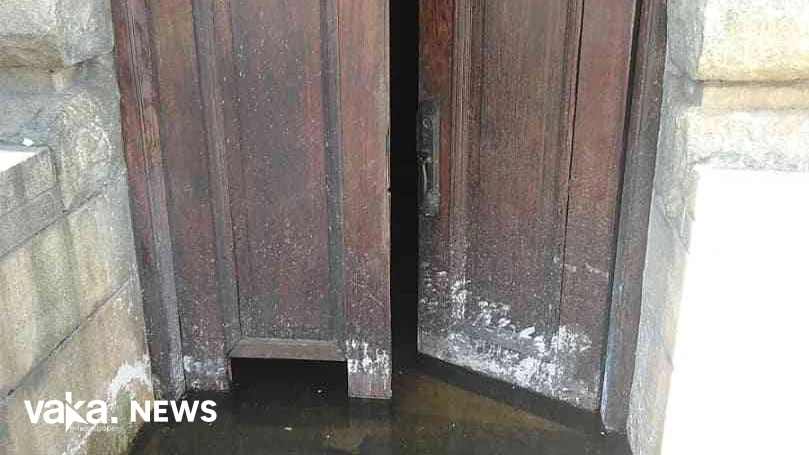Historical documents destroyed as Town House floods
- Category: General

- By Dion Kajokoto
Concerns have been raised regarding the possible destruction of colonial-era City of Harare historical records following the recent flooding of the Town House basement by a river that runs beside Julius Nyerere Way. According to experts, the occurrence shows that the city's administration building was not properly maintained by the local government. Since then, for security concerns, the Zimbabwe Electricity Transmission and Distribution Company has turned off the electricity to the iconic edifice, which houses the city's administrative headquarters. NewsDay was informed by Harare Mayor Jacob Mafume that water had entered the structure. He stated, "There has been an issue; keep in mind that there have been a lot of rains and that there are basement cracks where water has seeped into the building."
We met with representatives from the Art Gallery and the National Archives. That building contains some historical documents that require special draining in order to preserve them. Since its construction in 1933, the Town House has housed the municipal council's administrative offices. The Salisbury City Council was housed there before to independence.
It became the central office of the Harare City Council after 1980. Town House is an important monument because of its administrative function as well as its representation of the growth of Harare. It symbolizes the city's development from a colonial town to Zimbabwe's independent capital. "We are attempting to organize a procedure where we would skillfully remove the water without destroying the records that might be of historical significance to the city and historians," Mafume continued. "There are professionals helping us remove the water," According to Mafume, the majority of the capital's structures are situated on marshes, necessitating the continuous pumping of water. He declared, "Harare was built on a wetland."
Wetlands constitute the foundation for portions of several low- and high-density neighborhoods, including Borrowdale, Marlborough, Bluffhill, Monavale, Mabelreign, Chishawasha Hills, Vainona, Mabvuku, Tafara, Rugare, Kambuzuma, and Budiriro. "Water sources are the foundation of Harare, and numerous rivers flow from the city. The Mukuvisi River flows beneath Julius Nyerere Way, and there are other numerous rivers that lead to Mazowe and Mount Pleasant," Mafume stated.The topic of constructing on wetlands is one that is constantly up for discussion. "We recycle Lake Chivero water because it originates in Harare and flows into Lake Chivero," he explained. A number of the central business district's buildings are run-down and badly maintained, according to the local government.
Structural failure accidents are not uncommon. One person was killed and six others were injured when a building fell in downtown Harare last week. Days had passed since the local government issued building owners a 14-day deadline to make repairs to their structures when the tragedy occurred. "Renew or regenerate their buildings and/or properties either through repairs, refurbishments and/or repainting" is what the local government encourages property owners to do. "No person shall allow any building constructed upon premises of which he is the owner or occupier to become... a danger to the health of persons occupying or using the building or to the health of the public," according to model building by-laws, the local authority said in a notice to property owners.






